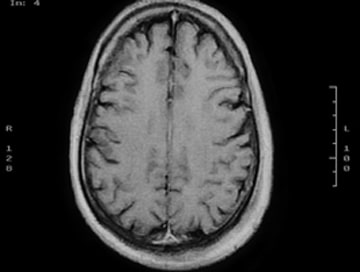
Whiplash is one of the most common injuries associated with motor vehicle accidents (MVAs). Defined as a neck injury caused by a rapid back-and-forth motion of the head—similar to the cracking of a whip—whiplash can lead to significant pain and discomfort.
Often resulting from rear-end car collisions, this condition can range from mild to severe and affect daily life and long-term health.
If you’ve experienced neck pain after a car accident, it’s crucial to understand what whiplash is, how it manifests, and the best treatment options. At Kuzyk Car Accidents & Personal Injury Lawyers, our whiplash lawyers provide guidance and connect you to the resources you need to recover.
Whiplash Meaning: Understanding the Basics
Whiplash is medically classified as a cervical strain or sprain. This injury occurs when the neck muscles, ligaments, and tendons are stretched beyond their normal range of motion due to a sudden impact. Common causes of whiplash include:
Car Accidents:
Rear-end collisions are the most frequent cause of whiplash. The sudden impact from behind causes the head to jerk backward and forward, straining the neck tissues.
Sports Injuries:
Contact sports or activities that involve rapid changes in direction or sudden impacts can also result in whiplash. Examples include football, hockey, boxing, and gymnastics.
Falls:
Unexpected falls, especially those that involve landing on the head or neck, can lead to whiplash injuries.
Physical Assault:
Violent acts that involve a blow to the head or forceful shaking can also cause whiplash.
In Bakersfield, where motor vehicle accidents are a common occurrence, whiplash is frequently reported among victims of car crashes.
Common Causes of Whiplash and Associated Risk Factors
| Cause | Risk Factors | Examples |
| Car Accidents | High-speed collisions | Rear-end impacts |
| Sports Injuries | Contact sports participation | Football, hockey |
| Physical Assault | Domestic violence | Shaking blows to the head |
| Falls | Uneven surfaces, slippery floors | Slipping or tripping unexpectedly |
What is Whiplash? Neck Injuries From MVA’s
Whiplash is a neck injury commonly caused by rear-end car accidents. This occurs due to a forceful back-and-forth movement of the head. Symptoms include neck pain, stiffness, headaches, dizziness, and blurred vision.
To diagnose whiplash, a doctor will review your medical history, perform a physical examination, and may request imaging tests. Treatment focuses on pain relief, restoring neck function, and preventing complications.
This often involves medication, physical therapy, and chiropractic care. Most people recover within a few weeks or months.
Wearing seatbelts, adjusting headrests, and practicing defensive driving can help prevent whiplash. If you’ve been in an accident, seek prompt medical attention for proper diagnosis and treatment.
Whiplash in Bakersfield
In areas like Bakersfield, where motor vehicle accidents are prevalent, whiplash injuries are commonly reported among accident victims.
The high incidence of car crashes, particularly rear-end collisions, increases the risk of individuals experiencing this type of neck injury.
What Does Whiplash Feel Like? Common Symptoms
Whiplash symptoms can vary depending on the severity of the injury. While some individuals may feel symptoms immediately, others might not experience discomfort until hours or days after the accident. Common symptoms of whiplash include:
Neck Pain and Stiffness:
The most prominent symptom is caused by strain or minor tears in the neck muscles and ligaments.
Headaches:
Often originating from the base of the skull and radiating to the forehead.
Limited Range of Motion:
Difficulty turning or tilting the head due to pain or stiffness.
Shoulder and Upper Back Pain:
Strain in the surrounding muscles and ligaments.
Dizziness:
A feeling of lightheadedness or imbalance.
Numbness or Tingling:
Nerve irritation can cause these sensations in the arms or hands.
If you experience any of these symptoms after an accident, it’s essential to seek medical attention promptly to rule out more severe injuries, such as fractures or spinal damage.
How Long Does Whiplash Last?
The duration of whiplash recovery depends on the severity of the injury:
Mild Whiplash:
With proper care and management, symptoms may subside in mild cases within a few days to a couple of weeks.
This often involves rest, over-the-counter pain medication, and gentle stretching exercises.
Moderate Whiplash:
For moderate whiplash injuries, recovery may take several weeks or even months. In these cases, a combination of physical therapy, medical treatment, and pain management techniques may be necessary.
Physical therapy can help restore range of motion, strengthen neck muscles, and improve posture, while medical treatment may involve prescription medications for pain and inflammation.
Chronic Whiplash:
Some individuals develop chronic whiplash, where symptoms persist for years or become permanent. This is more common in cases where the initial injury was severe or left untreated.
Chronic whiplash can significantly impact a person’s quality of life, causing chronic pain, reduced mobility, and nerve damage.
Treatment for chronic whiplash often involves a multidisciplinary approach, including pain management, physical therapy, psychological support, and alternative therapies.
Studies show that about 50% of people with whiplash recover fully within six months, while others may experience lingering symptoms for years. Whiplash recovery time varies significantly depending on the severity of the injury.
Diagnosing Whiplash: What to Expect
Medical professionals use various methods to diagnose whiplash, including:
- Physical Examination: A doctor will evaluate your neck’s range of motion, pain levels, and signs of tenderness or swelling.
- Imaging Tests: X-rays, MRIs, or CT scans can help identify fractures, soft tissue damage, or spinal injuries associated with whiplash.
Accurate diagnosis is critical to determining the appropriate course of treatment and preventing long-term complications.
Whiplash Treatment: Steps Toward Recovery
Failing to seek proper medical attention and treatment for whiplash can result in a range of complications that can significantly impact your quality of life and long-term well-being:
Chronic Neck Pain:
This persistent pain can range from mild discomfort to debilitating agony, interfering with your ability to work, sleep, and engage in daily activities.
Limited Range of Motion:
Whiplash can cause stiffness and reduced flexibility in your neck, making it difficult to turn your head, look up or down, or perform simple tasks.
Headaches:
Frequent and severe headaches, often originating at the base of the neck, can be a debilitating consequence of untreated whiplash.
Dizziness and Vertigo:
Whiplash can affect your balance and inner ear function, leading to dizziness, vertigo, and unsteadiness.
Nerve Damage:
In more severe cases, whiplash can cause damage to the nerves in your neck, resulting in symptoms such as tingling, numbness, weakness, or radiating pain in your arms and hands.
Temporomandibular Joint (TMJ) Dysfunction:
The impact of whiplash can also affect your jaw joint, leading to pain, clicking, and difficulty chewing or opening your mouth.
Cognitive Impairment:
Some individuals with untreated whiplash experience cognitive difficulties, such as memory problems, difficulty concentrating, and brain fog.
Psychological Distress:
The physical pain and limitations caused by whiplash can also take a toll on your mental health, leading to depression, anxiety, and post-traumatic stress disorder (PTSD).
Importance of Prompt Medical Attention and Legal Advice
Seeking prompt medical attention after a car accident is crucial for diagnosing and treating whiplash injuries. A healthcare professional can properly assess your condition, recommend appropriate treatment options, and help prevent long-term complications.
Additionally, consulting with a personal injury lawyer can help you understand your legal rights and options for seeking compensation for your injuries and losses.
A personal injury lawyer can guide you through the legal process, gather evidence, and negotiate with insurance companies on your behalf.
When to Contact a Lawyer
Consider seeking legal assistance if:
- Another party’s negligence caused your injury
- You are facing high medical bills or prolonged treatment
- The insurance company offers a low settlement
Contact Kuzyk Personal Injury & Car Accident Lawyers today for a free consultation to discuss your case and legal options.
Preventing Whiplash in Car Accidents
While not all accidents are avoidable, you can reduce your risk of whiplash by:
Adjusting Your Headrest:
Ensure it’s positioned at the correct height to support your head.
Wearing Your Seatbelt:
Proper use of seatbelts can minimize the impact of a collision.
Driving Defensively:
Avoid distractions and maintain a safe following distance.
Why You Need Legal Support After a Whiplash Injury
Whiplash injuries often result in costly medical bills, lost wages, and emotional distress. Insurance companies may downplay your injuries to minimize payouts. Working with an experienced personal injury attorney can help you:
- Accurately document your injuries.
- Negotiate with insurance companies.
- Secure compensation for medical expenses, pain and suffering, and lost income.
Kuzyk Car Accidents & Personal Injury Lawyers have extensive experience helping Bakersfield residents navigate the aftermath of car accidents.
Real Stories From Our Clients
See what our clients have to say about their experiences with Kuzyk Law. Check out our client testimonials to learn how we’ve helped accident victims recover compensation and rebuild their lives.
Get Legal Help for Your Bakersfield Car Accident Whiplash
If you’ve suffered from whiplash after a car accident in Bakersfield, don’t wait to seek legal assistance. Contact Kuzyk Car Accidents & Personal Injury Lawyers for a free consultation. Our team is dedicated to helping you secure the compensation you deserve so you can focus on your recovery.
Faqs about Whiplash, Neck Injuries From MVA’s
FAQs about Whiplash and Neck Injuries from Motor Vehicle Accidents
Whiplash is a neck injury caused by a forceful, rapid back-and-forth neck movement, similar to a whip’s cracking.
This sudden motion can strain and tear the muscles and tendons in the neck.
Whiplash is commonly associated with rear-end car accidents, but it can also occur in other types of collisions, sports injuries, or falls.
What are the symptoms of whiplash?
- Neck pain and stiffness
- Headaches, often starting at the base of the neck
- Dizziness and blurred vision
- Fatigue and irritability
- Ringing in the ears (tinnitus)
- Difficulty concentrating or remembering
- Shoulder or back pain
How is whiplash diagnosed?
A doctor will take a detailed medical history and perform a physical examination to assess your neck’s range of motion, tenderness, and muscle strength.
Imaging tests, such as X-rays, CT scans, or MRIs, may be ordered to rule out fractures or other injuries.
How is whiplash treated?
Treatment for whiplash often includes:
Pain medication: Over-the-counter or prescription pain relievers can help manage pain and inflammation.
Muscle relaxants: These medications can ease muscle spasms and stiffness.
Physical therapy: Exercises and stretches can help restore neck mobility and strength.
Ice and heat therapy: Applying ice packs and heat pads can reduce pain and swelling.
Soft collar: A soft collar may be recommended for a short period to support the neck.
How long does it take to recover from whiplash?
Recovery time varies depending on the severity of the injury.
Most people with whiplash recover within a few weeks or months with proper treatment.
Some people may experience chronic neck pain and other symptoms that last for years.
Can whiplash be prevented?
While it’s not always possible to prevent whiplash, there are some things you can do to reduce your risk:
- Wear your seatbelt properly every time you drive.
- Adjust your headrest to the correct height to support your head and neck in a collision.
- Avoid rear-end collisions by maintaining a safe following distance and being aware of your surroundings.
- If you’re involved in a car accident, seek medical attention immediately, even if you don’t have immediate symptoms.












